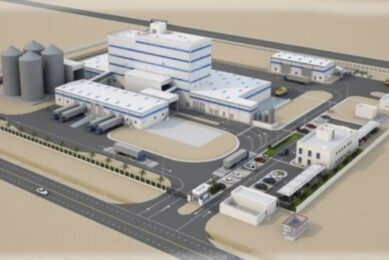Must know facts about feed microsystems

Imagine this: you‘re in the passenger seat of an SUV in a Russian city. The driver you met 15 minutes ago is doing 70 in a 40 km zone, then 90+ as the road opens up into the countryside. We‘re weaving through traffic, missing other cars by inches and passing cars down the centre line of a 2-lane road facing oncoming trucks. I ask the driver, Valery, if he isn’t going a bit fast. His reply: “Yes. Fast but accurate.”
Then I realised that the car never jerked, there was no slamming of brakes or stomping of the gas pedal. We just glided down the road like a bird flying through the air. Valery was a driver who I really came to like and respect.
This is s how your microsystem should be operating: fast but accurate. With supreme confidence. We see far too many micro-machines that are too slow, not quite accurate, and they back up the whole system. Let’s look at these 2 aspects.
Fast: Hand add are time/labour killers
The mixer cycle is partly fed by the microsystem. Everything has to operate within the time it takes for a mixer cycle to complete. That should be under 3½ minutes. Most mills have outgrown their microsystems and can’t handle the desired volumes within that time frame. There are many answers but you can be creative. It’s too easy to simply add another set of bins. Consider bulk bags, a second set of scales, move larger volume ingredients to the minor scale, etc. And hand adds are time/labour killers. Depending on your rations, they can’t always be eliminated. But do your best. A very expensive machine is a money saver if you can eliminate having to weigh and dump micro-ingredients into the mixer by hand.
 Your Mixer is an overlooked problem
Your Mixer is an overlooked problem
We expect an amazing amount of production from a mixer. Unfortunately, what it is accomplishing is often less than spectacular performance.
Accurate: Every ½ pound counts
It’s amazing how many people will look at their batch reports and think that being ½ pound off is OK. That was half a pound out of a 2½ pound inclusion and the product costs $ 8.50 per pound! Every line on your batch report should end with a column for “percentage error.” This highlights key problem area for operators. The software should also flag any errors that are beyond your tolerance parameters. Then chase down the problem that’s causing the errors. Again, there could be a myriad reasons, from air pressure to faulty load cells. But it has to be done.
 Animal feed experts talk…
Animal feed experts talk…
Click here to read more expert opinions on animal feed processing and animal nutrition.
Fast but accurate: this is for your customer, it’s for your month-end P&L, and, let’s face it…it establishes your reputation. I really liked Valery. Fast but accurate. The best driver we ever had. I hope your mill operates the same way.











